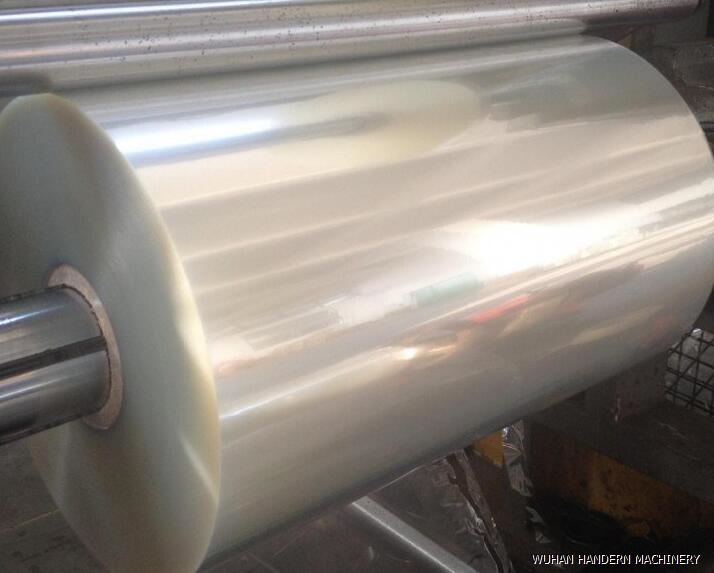Why should we use casting technology to produce fluoroplastic films
DATE:2023/11/2 10:51:13 / READ: / SOURCE:This station
Fluoroplastic film is an advanced plastic film with excellent performance, widely used in fields such as electronics, optics, medical, aerospace, etc. According to different chemical structures and performance characteristics, fluoroplastic films can be divided into several types: polytetrafluoroethylene (PTFE) film, fluorinated ethylene trifluoroethylene copolymer (FEP) film, fluorinated ethylene tetrafluoroethylene copolymer (PFA) film, and polyfluoroethylene (PVDF) film.

Secondly, fluorinated ethylene trifluoroethylene copolymer (FEP) film is a fluoroplastic film with unique properties. FEP thin films have excellent chemical corrosion resistance, excellent insulation performance, and good thermal stability, and are widely used in fields such as electronics, electrical appliances, optics, and medical treatment. The main characteristics of FEP films are good transparency, excellent temperature resistance (-200 ℃ to+200 ℃), and good weather resistance. In addition, FEP films also have low viscosity, low friction coefficient, and good mechanical properties, making them easy to process and form.
Once again, fluorinated ethylene tetrafluoroethylene copolymer (PFA) film is a fluoroplastic film with excellent performance. PFA thin films have excellent chemical corrosion resistance, excellent insulation performance, and excellent temperature resistance, and are widely used in fields such as electronics, electrical appliances, optics, and medical treatment. The main characteristics of PFA films are good transparency, excellent temperature resistance (-200 ℃ to+260 ℃), and good weather resistance. In addition, PFA film also has low viscosity, low friction coefficient, and good mechanical properties, making it easy to process and shape.
Finally, polyvinyl fluoride (PVDF) film is a fluoroplastic film with special properties. PVDF thin films have excellent chemical corrosion resistance, excellent insulation performance, and excellent temperature resistance, and are widely used in fields such as electronics, electrical appliances, optics, and medical treatment. The main characteristics of PVDF films are excellent transparency, excellent temperature resistance (-40 ℃ to+150 ℃), and good weather resistance. In addition, PVDF films also have high mechanical properties and anti-aging properties, which are suitable for various complex processes.
Why do we use casting technology to produce fluoroplastic films? Casting process is a commonly used plastic film production process, suitable for producing various plastic films, including fluoroplastic films. The main characteristics of casting process are continuous production, high production efficiency, low cost, and stable product quality.

Secondly, the cost of the casting process is relatively low. Compared to other processing processes, such as rolling and injection molding, the equipment investment and energy consumption of the casting process are relatively low, and the production cost is also relatively low. This makes the casting process an economical and effective choice for producing fluoroplastic films.
Once again, the casting process can achieve stable product quality. In the casting process, precise control of key indicators such as film thickness, surface finish, and mechanical properties can be achieved by controlling the temperature of the extruder, extrusion speed, and parameters of the melt flow adjustment device. This enables the production of fluoroplastic films to have stable quality and meet the needs of different fields.
In summary, fluoroplastic films include PTFE films, FEP films, PFA films, and PVDF films. These fluoroplastic films have excellent performance and are widely used in fields such as electronics, optics, medicine, aerospace, etc. As a commonly used plastic film production process, casting technology has the advantages of continuous production, high efficiency, low cost, and stable product quality, so it is widely used to produce fluoroplastic films. Through the application of casting technology, large-scale production of fluoroplastic films can be achieved to meet the needs of different fields.
Author:admin




